What Wiring Harness Do I Need for My Car? 1
What Wiring Harness Do I Need for My Car? A Guide to Choosing the Best Wiring Harness
When you set out to replace the wiring harness for your custom build, the options can be overwhelming. To a first-timer, the old wiring system in your hot rod looks more like a plate of spaghetti without a beginning, middle or end than it does a fully functioning electrical system that powers crucial components.
But before you even think about taking out your old system, you’re going to need a brand new wiring harness that’s fit for the job. Finding the best wiring harness for your ride is crucial for any complete restoration, but even that can be tricky to get right. That’s why we at Watson’s StreetWorks have come up with a comprehensive guide for answering the ever-important question, “What wiring harness do I need for my car?” Keep reading to find out more.
What is a Wiring Harness?
OK, so you probably already know what a basic wiring harness is – but we like to be thorough. An automotive wiring harness is nothing more than a collection of wires. We know, it’s pretty simple. But what does a wiring harness do when it’s installed in your vehicle?
An automotive wiring harness connects all of your car’s electrical devices and components to a primary power source. Typically, basic wiring harnesses include a fuse block and a minimum of 8 to 12 circuits. Circuits are a significant part of all basic wiring harnesses and one of the things you should keep in mind when deciding on the best wiring harness for your project car or hot rod.
What Are Circuits in a Basic Wiring Harness?
Circuits themselves are nothing more than designated wires meant to serve a specific purpose. For example, a set of wires for the headlights might require two circuits, and a wire for the glove box light or starter is likely to be one circuit. The number of circuits you’ll need depends on the number of electrical components you have. When it comes to simple vehicle projects, like an off-road buggy restoration, you may need only a small number of circuits, which in turn means you’ll need an automotive wiring harness with only 12 circuits, for example. Contrast that with a classic hot rod complete with more than a few luxury items, and you might need a new 24-circuit wiring harness. The difference between the need for a 12, 18 or 24 automotive wiring harness is mainly vehicle compatibility.
3 Types of Wiring Harnesses
When it comes to designs of automotive wiring harnesses, there are just three types to know.
- 1. Some automotive wiring harnesses have wires attached to the fuse panel. The wires are often then routed to their termination point, cut to the desired length and connected to a load.
- 2. Other types of automotive wiring harnesses have wires that run from loads. These are again cut to the desired length and connected to the fuse panel. 3. Finally, there are exact factory replacement basic wiring harnesses that are terminated on both ends. Typically, some additional plugs will have to be installed.
Although each type of automotive wiring harness has its own merits, we’ve found that purchasing a new wiring harness with the wires attached to the fuse panel makes installation and routing more straightforward.
How to Choose a New Wiring Harness
When choosing the best wiring harness for your project, we advise that your most important consideration be the wish list of electrical system accessories you plan to power. That can mean your stereo, headlights, cell phone charger, dome and trunk lights, brake lights, etc.
Once you have decided that, you’ll be able to determine how many circuits you’ll need and how many amps will be required to feed those accessories. Keep in mind that if your wish list contains items you might want to install later, it’s a good idea to purchase a new wiring harness with more circuit capabilities than you need now so that you can easily expand later without having to buy another new harness.
Modular kits provide the benefit of unrestricted panel placement.
Integrated automotive wiring harnesses mount under your dash, and all the connections are made at the final connection point. While these systems are less flexible for panel mounting, their wires are designed with specific routing locations in mind. Once again, both systems have their merits. It’s up to you which you like more.
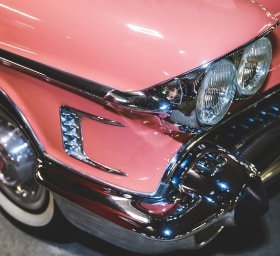
Tips for Finding the Best Wiring Harness
Part of purchasing a new wiring harness for your ride means sorting out the bad quality kits from the good. Here are a few valuable tips you can use with any retailer to determine the quality of their products.
- See How the Connectors Stay Connected: Automotive wiring harness manufacturers connect wiring and connectors through crimping. Crimping needs to be incredibly exact in order to ensure the cables can correctly transmit data, power or signals without degradation. Ensure your manufacturer performs quality testing on the crimps of their automotive wiring harnesses.
- Find Out if the Harness Is Expandable: To be considered expandable, a basic wiring harness must be able to accommodate more amperage than the number of circuits. This ensures you’ll experience minimal voltage drop across all the circuits and helps the wiring harness perform as expected in any situation (even hot weather).
- Talk to Tech Support: More than anything, having confidence in tech support means having faith in your automotive wiring harness. If you give the manufacturer a call and they struggle to answer some of the hard questions (what the circuit limits are, if the harness is expandable, what type of connectors they use), then they might not be able to help you when it comes time to wire up your hot rod. More than that, if they don’t know their products inside and out, they might not be the best fit for you.
Find the Best Wiring Harness for Your Ride at Watson’s StreetWorks
Now that you’ve read through our guide, you might have a better answer to the question, “What wiring harness do I need for my car?” Now comes the question of where to find a new wiring harness that meets your needs. At Watson’s StreetWorks, we’ve got a great selection of the best wiring harnesses to match your vehicle. Choose from our selection of model-specific automotive wiring harnesses, or check out some of our universal ones if you’re doing a custom build. While you’re there, check out some of our hot rod wiring materials you can use to make the job even more accessible. We’ve got everything from relay packs and fuse blocks to circuit breakers to make your automotive wiring harness installation a success. If you have any questions about our products, feel free to contact our customer service at any time for a swift and concise response. Or, you can give us a call directly at 603-943-7923. Find the best wiring harness for your ride today with Watson’s StreetWorks.
Related Articles: What Wiring Harness Do I Need for My Car?

Wiring Panels & Kits
You took one look under the dash of your ’34 and knew that new wiring was a must. The mess looks something like a raw Klingon breakfast delicacy…
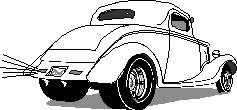
Talkin’ about Taillights Clarifying Confusion about Taillight Functions
As people add turn signals to their old street rod or as they do more major modifications by changing or adding lights, they often become confused about the circuitry of the taillights…
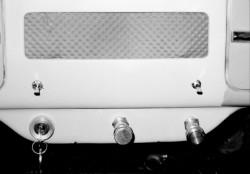
Rewiring the Beetle in Style
Almost from the first day that a Beetle drove the roads, VW restoration products were needed. Now don’t get us wrong. VW’s weren’t built to break down…


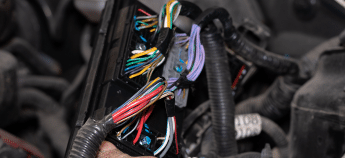
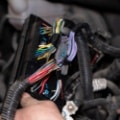
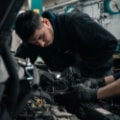
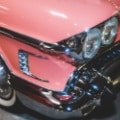


Hello, I am looking for some help. I have a 1986 square body C10 that I have dropped onto the chassis of a 2007 Savannah 3500 with a LS 6.0. I am also using the hydrostatic brake system from the van. All chassis components are from the 2007. For the interior I am using the 2007 van speedometer but everything else being used is from the 86 Chevy, including all switches (lights, wipers, etc)(no A/C) I will be using an original fuel tank as the fuel cell currently has no baffles and when I corner, the pump suck air, stalls and will not restart. I currently have the ECU’s mounted under the hood but would like to put them behind the seat. Any help here would be much appreciated.
Thank you,
Tim